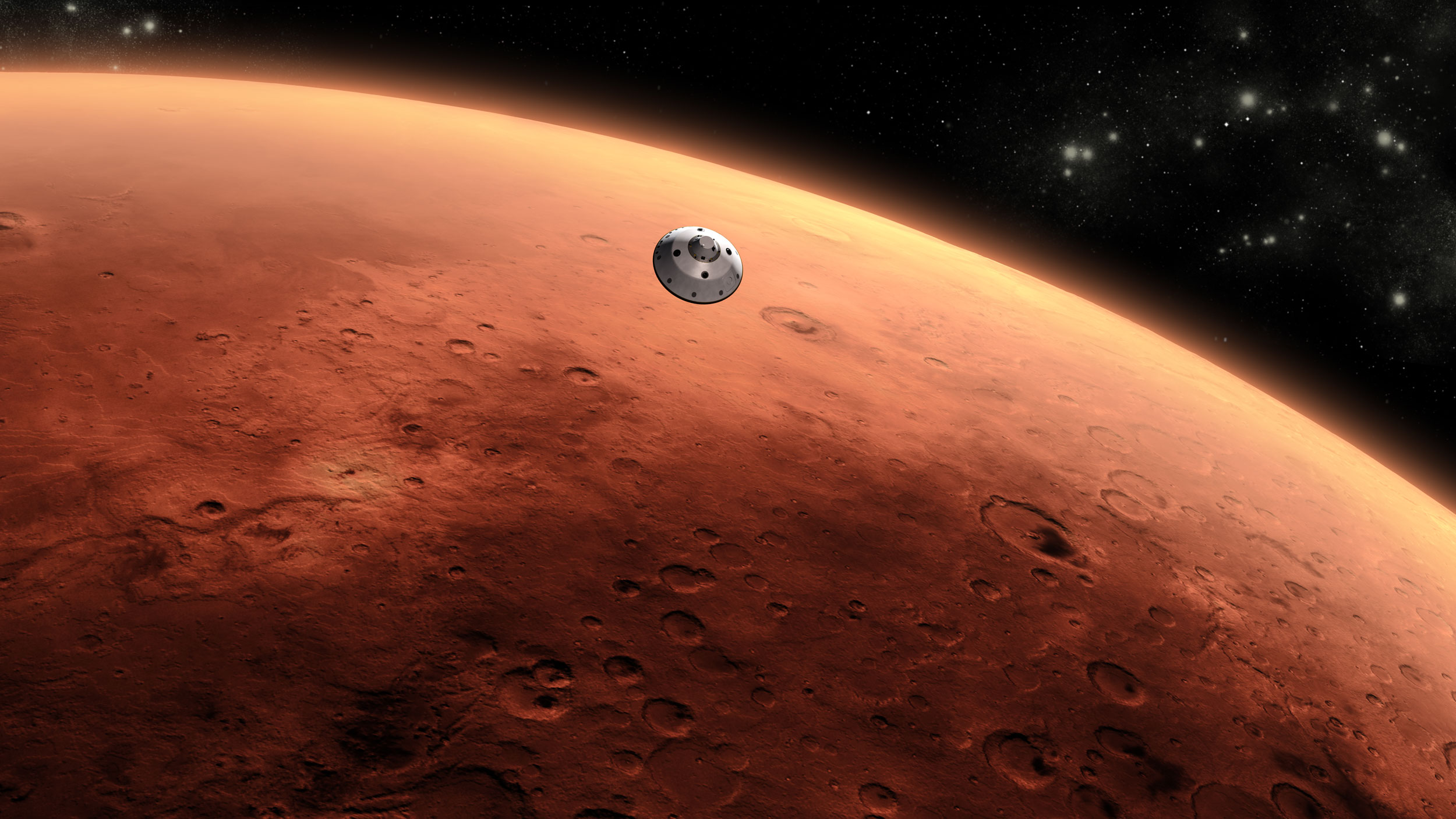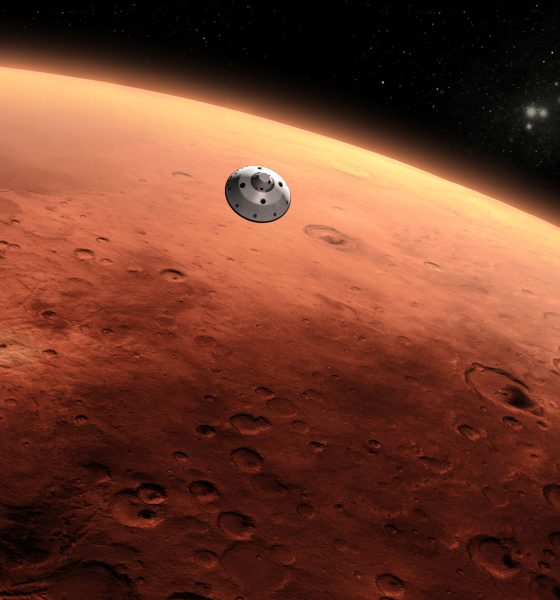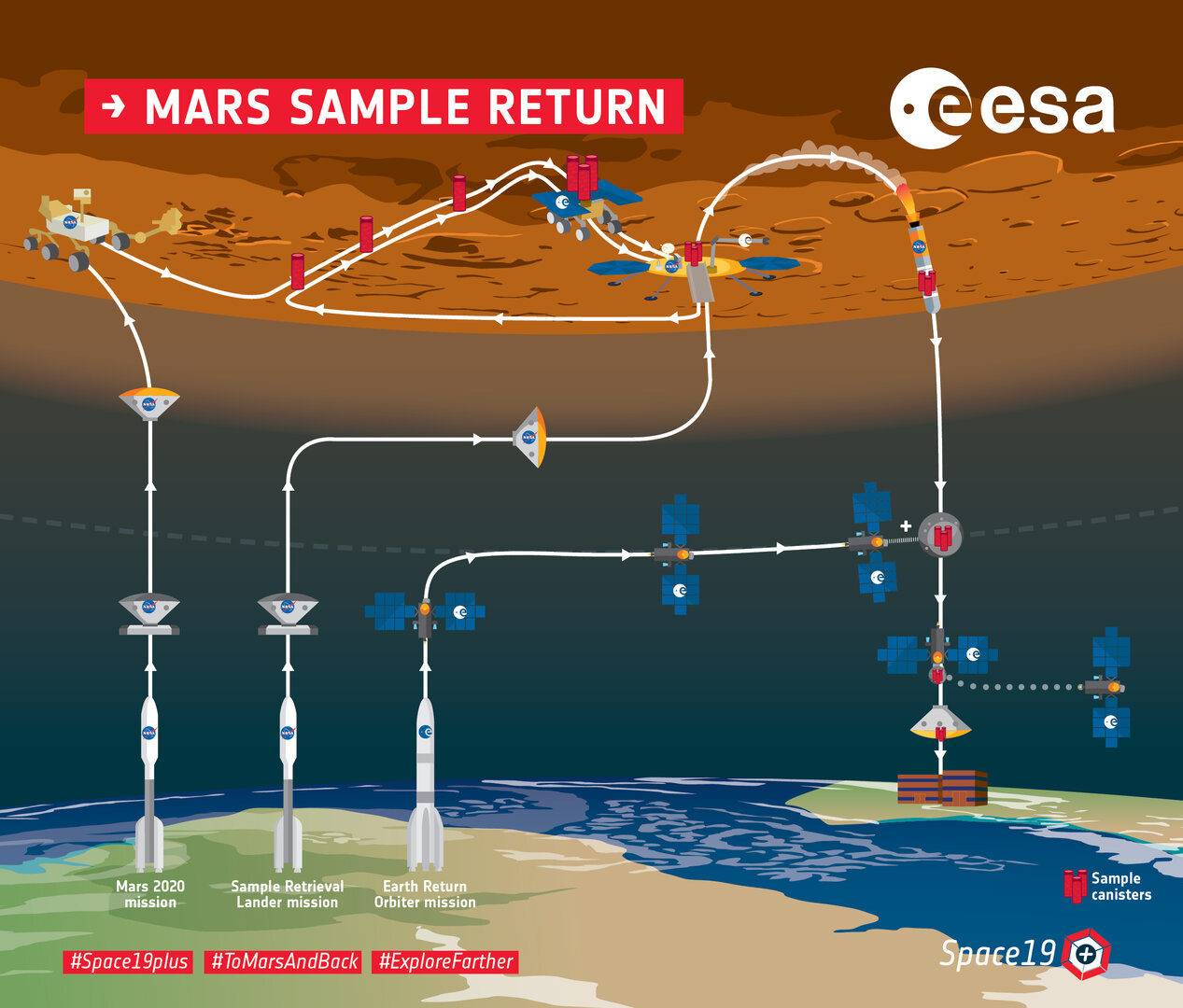

Space
Mars sample-return mission gets boost from Trump’s 2021 budget request
On Monday, Feb. 10, the White House released its 2021 federal budget request, and in it, the administration identified NASA’s Mars sample return plans as a top priority. It also earmarked funding for a future mission to map out where ice is located on Mars.
The request asks for $25.2 billion for NASA, which is roughly a 12% boost over what the agency’s current budget is.
Of that $25.2 billion, Trump has designated $233 million for “Mars Future Missions” — one of which hopes to transport pristine pieces of the Red Planet to Earth, sometime around the 2031 time frame.
“Mars Future supports the development of the Mars Sample Return (MSR) mission that is planning to enter formulation (Phase A) as early as the summer of FY 2020,” NASA officials wrote in a description of the agency’s proposed 2021 allocation.
“In FY 2021, MSR formulation activities include concept and technology development, and early design and studies in support of the Sample Return Lander and the Capture/Containment and Return System,” they added. “Mars Future also supports a study of the facility required for handling of returned samples.”

The samples NASA is referring to will be collected by NASA’s next Mars rover, which is scheduled to launch in July. Dubbed the Mars 2020 rover, the six-wheeled robot will land on Mars in Feb. 2021, touching down inside Jezero Crater. It’s goal: to look for signs of life, and to collect samples of Mars for future return to Earth.
The rover, which will receive an official name sometime in March, will bag and tag samples of rocks and dirt, sealing them in canisters for eventual return to Earth. Once they arrive here, scientists all around the world will be able to study the samples and better understand our celestial neighbor.
The sample return part of the mission is a collaboration between NASA and the European Space Agency (ESA). It will be a multi-step process, which includes the launch of NASA’s Sample Return Lander (SRL) followed by ESA’s Earth Return Orbiter (ERO).
The logistics are still being finalized as NASA is looking for a director to lead the program. But a rough outline of the planned return can be broken down as follows:
NASA’s sample return vehicle will carry a small rocket called the Mars Ascent Vehicle (MAV) along with an ESA-built rover, called the Sample Fetch Rover (SRF). The SRF will seek out the samples collected by the 2020 rover, and haul them to the MAV.
From there, the MAV will then launch the samples into orbit around Mars; there they’ll be picked up by the ERO, and the craft will head back toward Earth. Once in close proximity to Earth, the ERO will jettison the container, and it will land in the Utah desert. NASA expects this to all happen around 2031, although none of the dates are official at this point.
Also outlined in the budget is a need for a Sampling Receiving Facility, where the precious bits of Mars will be handled with the utmost care. In the facility, scientists will catalog the samples, and make sure that there’s no cross-contamination with Earth particles. (And to ensure that if there is life on Mars, no little Martian microbes will get out into the environment.)

But that’s not all, the “Mars Future Missions” budgetary line also allows for a collaboration with Canada to create the Mars Ice Mapper. Detailed information on this project is scarce at the moment as it’s in its very early stages.
“The Mars Ice Mapper is a remote sensing mission under study intended to map and profile the near-surface (3-15 meters) water ice, particularly that which lies in the mid-latitude regions, in support of future science and exploration missions,” NASA officials wrote in the budget document.
The Mars Ice Mapper could be a preliminary step in the effort to put humans on Mars, a goal NASA aims to accomplish sometimes in the 2030’s.
The 2021 budget request allocates more money to future Mars missions than previous budgets have, lining up with NASA’s overall goal of sending astronauts to both the moon and Mars.
If this budget request is any indication, the “Mars Future Missions” programs could set their budgets steadily increased as the years progress. But it’s not set in stone. The request is just that, a request. Congress has the ultimate approval and could choose to fund everything as it, or shuffle things around. Let’s hope it’s the latter so valuable programs, like STEM engagement, Earth science missions, and an incredible telescope are not cancelled.

News
SpaceX shades airline for seeking contract with Amazon’s Starlink rival

SpaceX employees, including its CEO Elon Musk, shaded American Airlines on social media this past weekend due to the company’s reported talks with Amazon’s Starlink rival, Leo.
Starlink has been adopted by several airlines, including United Airlines, Qatar Airways, Hawaiian Airlines, WestJet, Air France, airBaltic, and others. It has gained notoriety as an extremely solid, dependable, and reliable option for airline travel, as traditional options frequently cause users to lose connection to the internet.
Many airlines have made the switch, while others continue to mull the options available to them. American Airlines is one of them.
A report from Bloomberg indicates the airline is thinking of going with a Starlink rival owned by Amazon, called Leo. It was previously referred to as Project Kuiper.
American CEO Robert Isom said (via Bloomberg):
“While there’s Starlink, there are other low-Earth-orbit satellite opportunities that we can look at. We’re making sure that American is going to have what our customers need.”
Isom also said American has been in touch with Amazon about installing Leo on its aircraft, but he would not reveal the status of any discussions with the company.
The report caught the attention of Michael Nicolls, the Vice President of Starlink Engineering at SpaceX, who said:
“Only fly on airlines with good connectivity… and only one source of good connectivity at the moment…”
CEO Elon Musk replied to Nicolls by stating that American Airlines risks losing “a lot of customers if their connectivity solution fails.”
American Airlines will lose a lot of customers if their connectivity solution fails
— Elon Musk (@elonmusk) December 14, 2025
There are over 8,000 Starlink satellites in orbit currently, offering internet coverage in over 150 countries and territories globally. SpaceX expands its array of satellites nearly every week with launches from California and Florida, aiming to offer internet access to everyone across the globe.
Currently, the company is focusing on expanding into new markets, such as Africa and Asia.
News
Tesla hints at Starlink integration with recent patent
“By employing polymer blends, some examples enable RF transmission from all the modules to satellites and other communication devices both inside and outside the vehicle.”

Tesla hinted at a potential Starlink internet terminal integration within its vehicles in a recent patent, which describes a vehicle roof assembly with integrated radio frequency (RF) transparency.
The patent, which is Pub. No U.S. 2025/0368267 describes a new vehicle roof that is made of RF-transparent polymer materials, allowing and “facilitating clear communication with external devices and satellites.”
Tesla believes that a new vehicle roof design, comprised of different materials than the standard metallic or glass elements used in cars today, would allow the company to integrate modern vehicular technologies, “particularly those requiring radio frequency transmission and reception.
Tesla has recently filed a US patent application on integrating RF transparent materials into the roof structure.
“facilitating clear communication with external devices and satellites”
Tesla fleet is getting @Starlink connectivity integration soon. LFG @Tesla @elonmusk… pic.twitter.com/bLa8YtPLd1
— Chansoo Byeon (@Chansoo) December 9, 2025
Instead of glass or metallic materials, Tesla says vehicles may benefit from high-strength polymer blends, such as Polycarbonate, Acrylonitrile Butadiene Styrene, or Acrylonitrile Styrene Acrylate.
These materials still provide ideal strength metrics for crashworthiness, stiffness for noise, vibration, and harshness control, and are compliant with head impact regulations.
They would also enable better performance with modern technologies, like internet terminals, which need an uninterrupted signal to satellites for maximum reception. Tesla writes in the patent:
“By employing polymer blends, some examples enable RF transmission from all the modules to satellites and other communication devices both inside and outside the vehicle.”

One of the challenges Tesla seems to be aware of with this type of roof design is the fact that it will still have to enable safety and keep that at the forefront of the design. As you can see in the illustration above, Tesla plans to use four layers to increase safety and rigidity, while also combating noise and vibration.
It notes in the patent that disclosed examples still meet the safety requirements outlined in the Federal Motor Vehicle Safety Standards (FMVSS).
Starlink integrated directly into Tesla vehicles would be a considerable advantage for owners. It would come with a handful of distinct advantages.
Initially, the inclusion of Starlink would completely eliminate cellular dead zones, something that is an issue, especially in rural areas. Starlink would provide connectivity in these remote regions and would ensure uninterrupted service during road trips and off-grid adventures.
It could also be a critical addition for Robotaxi, as it is crucial to have solid and reliable connectivity for remote monitoring and fleet management.
Starlink’s growing constellation, thanks to SpaceX’s routine and frequent launch schedule, will provide secure, stable, and reliable internet connectivity for Tesla vehicles.
Although many owners have already mounted Starlink Mini dishes under their glass roofs for a similar experience, it may be integrated directly into Teslas in the coming years, either as an upgrade or a standard feature.
Investor's Corner
SpaceX IPO is coming, CEO Elon Musk confirms
However, it appears Musk is ready for SpaceX to go public, as Ars Technica Senior Space Editor Eric Berger wrote an op-ed that indicated he thought SpaceX would go public soon. Musk replied, basically confirming it.

Elon Musk confirmed through a post on X that a SpaceX initial public offering (IPO) is on the way after hinting at it several times earlier this year.
It also comes one day after Bloomberg reported that SpaceX was aiming for a valuation of $1.5 trillion, adding that it wanted to raise $30 billion.
Musk has been transparent for most of the year that he wanted to try to figure out a way to get Tesla shareholders to invest in SpaceX, giving them access to the stock.
He has also recognized the issues of having a public stock, like litigation exposure, quarterly reporting pressures, and other inconveniences.
However, it appears Musk is ready for SpaceX to go public, as Ars Technica Senior Space Editor Eric Berger wrote an op-ed that indicated he thought SpaceX would go public soon.
Musk replied, basically confirming it:
As usual, Eric is accurate
— Elon Musk (@elonmusk) December 10, 2025
Berger believes the IPO would help support the need for $30 billion or more in capital needed to fund AI integration projects, such as space-based data centers and lunar satellite factories. Musk confirmed recently that SpaceX “will be doing” data centers in orbit.
AI appears to be a “key part” of SpaceX getting to Musk, Berger also wrote. When writing about whether or not Optimus is a viable project and product for the company, he says that none of that matters. Musk thinks it is, and that’s all that matters.
It seems like Musk has certainly mulled something this big for a very long time, and the idea of taking SpaceX public is not just likely; it is necessary for the company to get to Mars.
The details of when SpaceX will finally hit that public status are not known. Many of the reports that came out over the past few days indicate it would happen in 2026, so sooner rather than later.
But there are a lot of things on Musk’s plate early next year, especially with Cybercab production, the potential launch of Unsupervised Full Self-Driving, and the Roadster unveiling, all planned for Q1.








